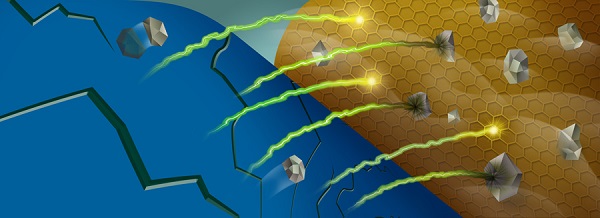Users of digital products have found that as time goes on, the battery capacity will always be lost. Although the battery life at the time of the purchase was good, after two years of frequent charge and discharge, it was completely different. The good news is that the scientists of the US Department of Energy recently seem to have figured out one of the mechanisms that led to the battery's "compaction", and it is hopeful to come up with a strategy to deal with. In a common lithium-ion rechargeable battery, lithium ions can travel through the electrolytes of the yin and yang, creating a current that powers the device. The so-called capacity can be simply understood as the volume of lithium ions that run back and forth in the battery (at the time of charge and discharge).

When the manganese ions (gray on the top) are stripped from the cathode (blue area) of the cell, they react with the electrolyte near the anode (gold region) of the cell and trap the lithium ions (green yellow in the figure above).
The U.S. Department of Energy’s study found that the materials that make up the battery's electrodes often break down, causing certain metal ions (specifically manganese) to float freely and run to the opposite electrode, trapping lithium ions.
Over time, more and more lithium ions cannot be put into normal operation (locked), and the capacity of the battery is gradually reduced, resulting in the inability to continue to provide ideal battery life.
Daniel Abraham, co-author of the research paper, explained: “This is strictly related to the 'managing' of manganese on electrodes and the amount of lithium ions that are 'trapped'. But now we already know the mechanism behind this, In the future, we will find ways to overcome it."
Ningbo Kyson Cool Electronic Technology Co., Ltd. , https://www.kysoncool.com